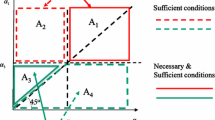Abstract
This paper considers the dynamics of introducing pollution taxes when firms have to invest into abatement facilities. This accumulation of abatement capital, however, proceeds sluggishly. Therefore, actual policy proposals of pollution taxes consider a phased introduction. This paper considers the normative aspects of such a policy. More precisely, it proves that pollution taxes should be introduced radically rather than gradually.
Similar content being viewed by others
References
Ko, Il-Dong, E. Harvey Lapan and Todd Sandler (1992), ‘Controlling Stock Externalities. Flexible versus Inflexible Pigovian Corrections’,European Economic Review 36, 1263–1276.
Kamien, Morton. I. and Nancy L. Schwartz N. (1981),Dynamic Optimization: The Calculus of Variations and Optimal Control in Economics and Management. Amsterdam, North Holland.
Pindyck, R. S. (1982), ‘The Optimal Phasing of Phased Deregulation’,Journal of Economic Dynamics and Control 4, 281–294.
Wirl, F. (1991a), ‘Phasing of Deregulation: Normative versus Positive Objectives’,Journal of Regulatory Economics 3, 89–106.
Wirl, F. (1991b), ‘Dynamics of Commodity Taxation — an Example of an Energy Tax’,System Dynamics Review 7, 145–158.
Author information
Authors and Affiliations
Rights and permissions
About this article
Cite this article
Wirl, F. Efficient introduction of Pigovian taxes. Environ Resource Econ 4, 535–544 (1994). https://doi.org/10.1007/BF00693044
Issue Date:
DOI: https://doi.org/10.1007/BF00693044




